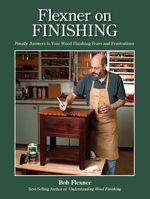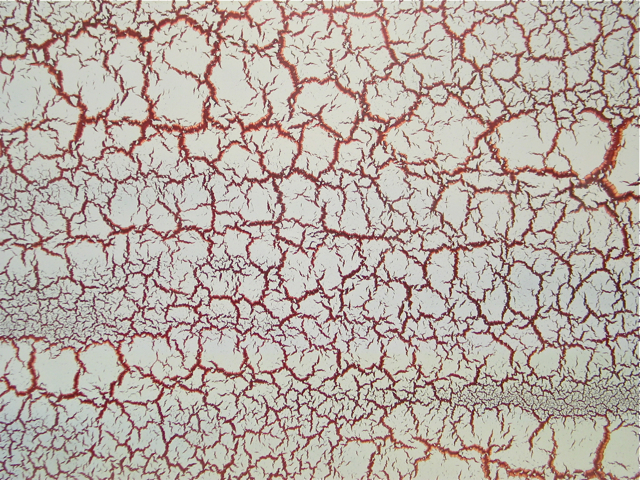We may receive a commission when you use our affiliate links. However, this does not impact our recommendations.
A friend called me the other day with a question. He was matching a crackle-lacquer finish from the 1980s and wanted to know how this finish is made and how to apply it.
Crackle lacquer is lacquer with so much solid material, usually silica, added that there isn’t enough binder (lacquer) remaining to glue all the solid particles together. The result is that the lacquer cracks when it dries and shrinks.
The usual way of applying a crackle-lacquer finish is to first apply a colored background, usually a pigmented lacquer coat. Then spray a coat of colored crackle lacquer, which cracks and pulls apart revealing the color underneath.
You can control the size of the cracks and “islands” in between by varying the thickness of the crackle coat and the length of time it takes to dry. Thicker and slower drying crackle coats develop larger cracks and islands. Thinner and faster drying crackle coats result in smaller cracks and islands. (It’s similar to mud cracking on dirt roads.)
Simply by moving your spray gun faster and slower and at greater and lesser distances from the workpiece, you can create a pleasing effect.
Always apply a clear coat (gloss, satin or flat) over the crackle coat to protect it from being shattered when struck by a hard object.
 Want to learn more about finishing from Bob Flexner?
Want to learn more about finishing from Bob Flexner?
Check out his book “Flexner on Finishing,” at shopwoodworking.com
Here are some supplies and tools we find essential in our everyday work around the shop. We may receive a commission from sales referred by our links; however, we have carefully selected these products for their usefulness and quality.











Nice to know. Now, I’ve got the opposite problem: A lacquer(?) finish on an old piano that’s much ‘crackled’ in the most exposed horizontal surfaces. If the ‘crackle’ comes from bad solid to solvent ratio, can a treatment with solvent restore this old finish? Or is the only solution taking off this grand piano lid and other parts and going down to original wood? I’d be up to the former but don’t know that I want to tackle the latter. PEACE, and thanks.